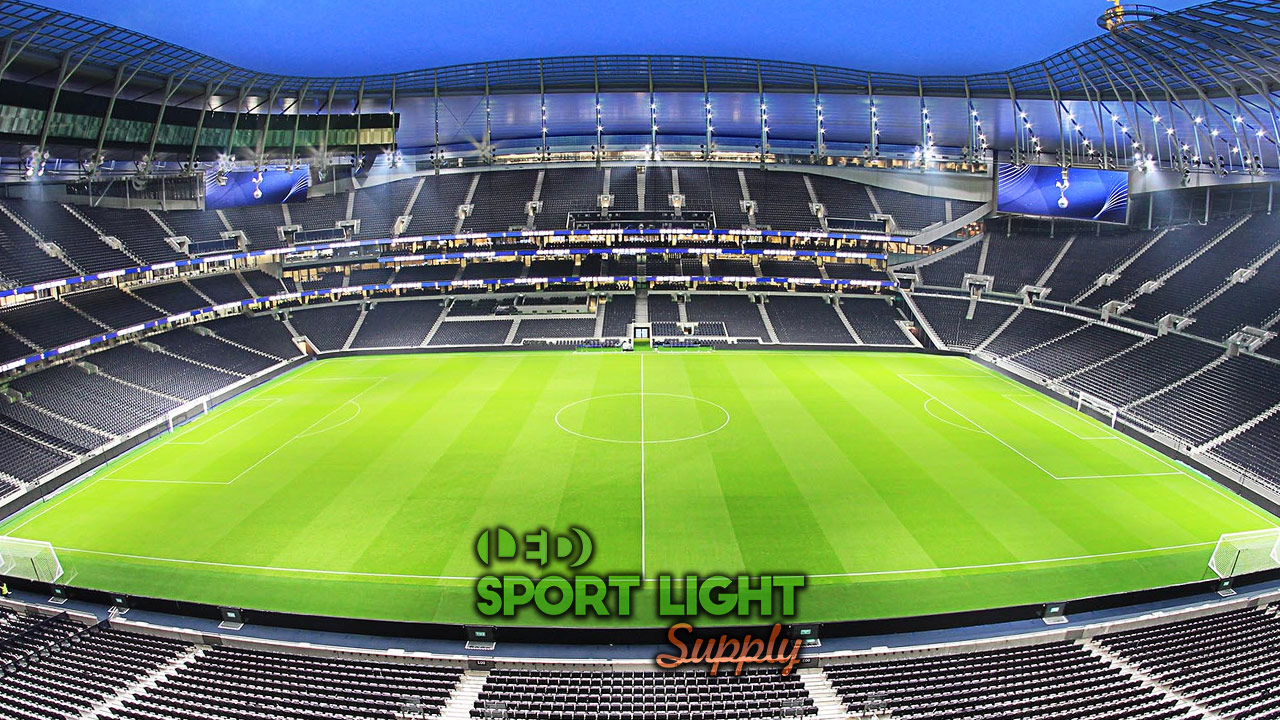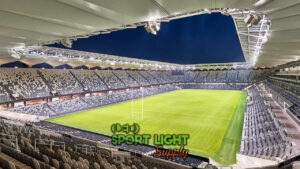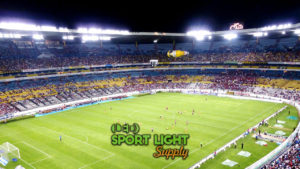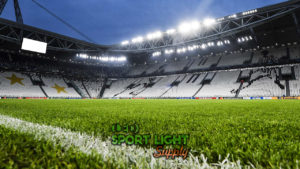The importance of knowing the stadium lighting cost
Most stadium owners think that an expensive stadium light system means high-quality lighting. By contrast, cheap or cheaper lighting solutions seem to them as less desirable. Or just not ideal for sports lighting. But in reality, better tech comes with superior features. As in the case of LED lights, no metal halide equivalent can give you the same results while keeping down the expenses.
The more money you spend, the less you have in your budget. For example, one could never imagine that a cheap football light could be more efficient than an expensive one. I mean, if he or she did not keep up to date with the latest fixture models. But as new tech develops over the years, new saving opportunities open up the market to smarter stadium owners. So, here are 6 tips to help you go beyond the price point divergence for:
- making savvier investments
- controlling running costs
- choosing better products
- less light pollution
- enhanced illuminance
- brighter lights in both the playing field and training enclosures
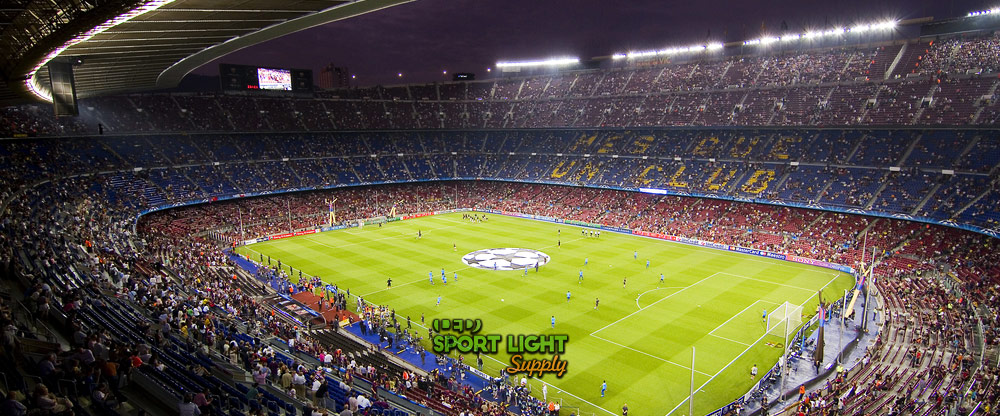
How much does a stadium light cost?
For a complete stadium light system, you can expect to pay anywhere from $30,000 to $270,000. Of course, the expenses vary from one location to another. Plus, some stadiums might be located in a more diverse geographical area. To explain, one where the weather conditions can damage the lights if not well protected. So, you might have to spend more on accessories and maintenance.
Each stadium light can cost differently due to many reasons. For one thing, the field size influences the number of lights you need. Besides, the lighting layout must take into account the shape of the stadium as well. So, you always have to deal with the physical layout aspect.
Depending on the sports, the lighting standards change. For example, FIFA and UEFA have similar soccer field lighting standards. But FIVB and USAV have different volleyball court lighting regulations. As a result, you must select specific sports lights that provide enough brightness to comply with the demands.
Here are some specific examples.
1. Football/soccer stadium light price
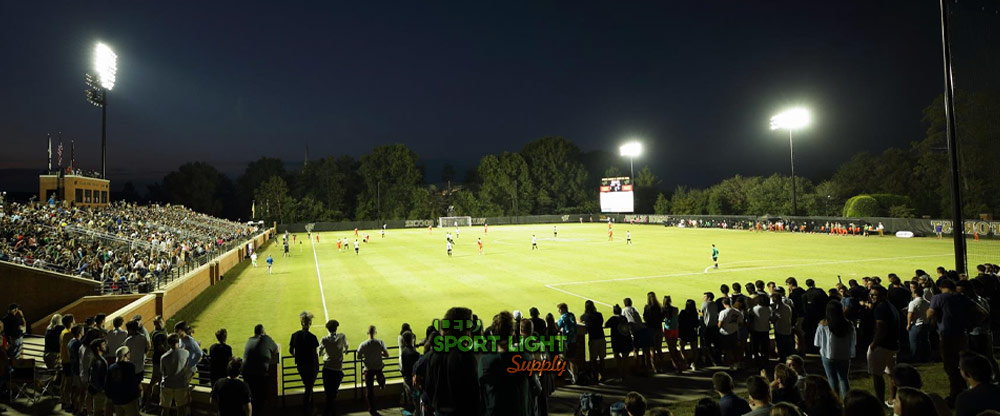
In general, the football lighting system costs from $40,000 to $150,000. The recommended light levels vary between 400 and 2000 lux per match. But, at the professional league level, events like the championship finals could need even more brightness.
As you can imagine, light cost increases with more demanding lux levels. Most stadium light system prices are between $60,000 to $80,000. With this in mind, a metal halide lighting system can raise the price by 20-40% due to maintenance costs alone.
By installing LED lights, the new fixtures lead to better efficiency and lighting uniformity. And this is certified by professional equipment such as a lux meter after you divide the pitch into a grid. The lux levels in all sampling points should have more-or-less the same value in order to have high lighting uniformity.
The penalty area requires extra illuminance. Especially during a penalty kick. Similarly, a football stadium owner should provide many lights. Or, to say it better, enough lights to allow referees to spot offside traps and illegal touching. So, adding spotlights is necessary, which may increase the overall price of new lighting systems.
2. AFL football field light cost
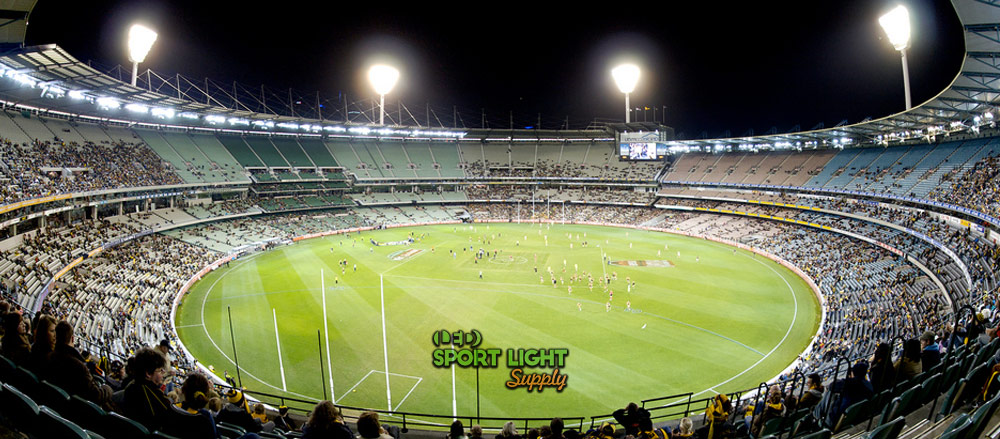
The Australian Football League attracts millions of Australian viewers. But over the years, Australian rules football became popular in the US and other nations as well. So, most Australian football matches are televised live.
The teams consist of 18 players. In particular, the oval-shaped field represents the biggest playing field of all those used in the different forms of football. It is almost four times bigger than a soccer field.
It should be no surprise that the stadium light system cost rises from $60,000 to $200,000. In fact, the oval-shaped field needs a special lighting design. One needs to install large beam lights for close range and spotlights for long-range since they have a smaller beam angle.
Tackling is allowed on the pitch. In detail, the field umpire makes calls and awards free-kicks. But the ref cannot take disciplinary measures against any player. Instead, the league tribunal decides after the match. So, illuminance is key to provide enough brightness for better decisions.
3. Baseball stadium lighting cost
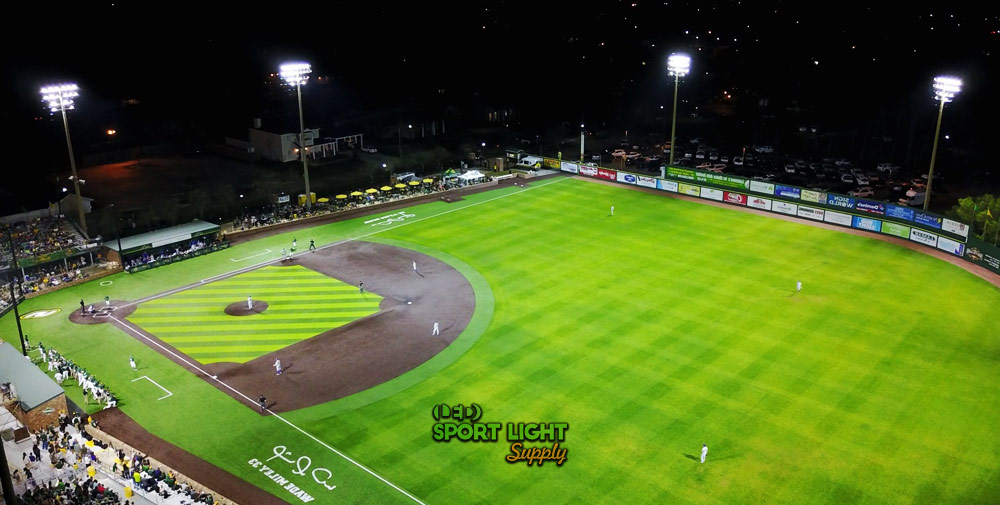
Broadly speaking, lighting up a baseball stadium can cost you from $12,000 to $120,000. This gap is in part due to its popularity in the United States. After all, there are high-school, college, amateur, minor, and major leagues.
With varying levels of competition come different lux levels in the diamond-shaped field. In any case, illuminance is brighter for the infield and dimmer for the outfield. The difference is usually 1.5 to 2 times. For example, 1000 lux for infield and 500 to 667 lux for the outfield.
In some stadiums, you can still find metal halide floodlights. But today, most baseball stadium owners switched to LED lighting. As a result, operating costs end up eating up the budget. In other words, you might be stuck with more expenses because you need to spend more money on new lights and maintenance.
MLB’s lighting requirements are quite strict. This means that you also need to pay for a safety audit as well. In general, light control involves luminaries with specific optic controls and engineered solutions.
4. Cricket stadium lighting expenses
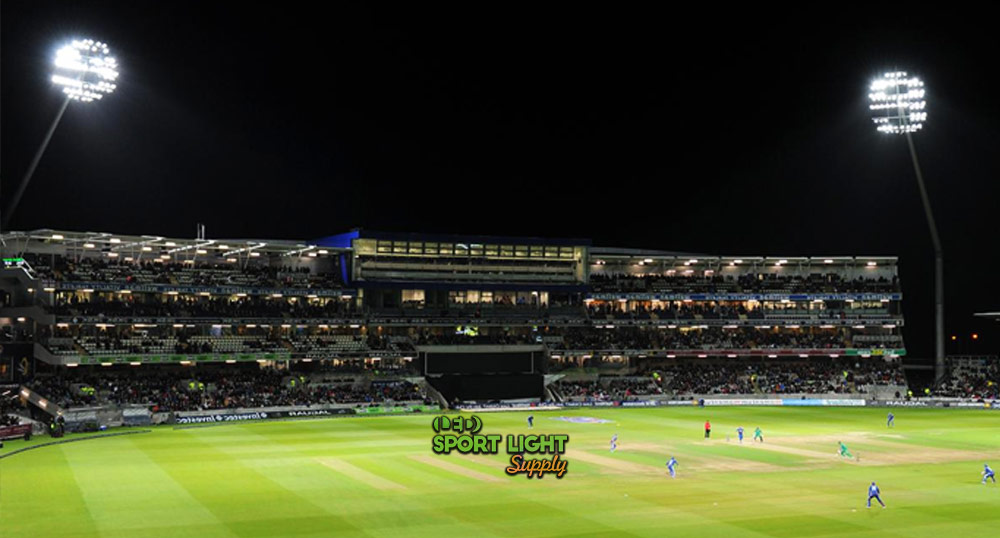
Excellent visibility is imperative during cricket matches. In fact, matches can last up to five days. A game lasts at least four or five hours. So, umpires and players need to see the cricket ball at all times. Especially the fielders.
To provide the safest conditions, a cricket stadium owner could end up spending anywhere from $21,600 to $270,000.
The oval grass cricket field is similar to a baseball one. In detail, players need brighter lights for the infield and enough light distribution for the outfield. A drive could shoot the ball in every direction, so uniformity gradient becomes highly relevant.
Uniformity gradient refers to the measurement of change in terms of illuminance between two contiguous areas. If this value is not ideal, a fielder running to catch the ball could be blinded by the lights. Also, longer matches mean more running expenses. All in all, the lighting system should be reliable enough to last for several innings at a time without any problem.
5. Basketball arena lamp cost
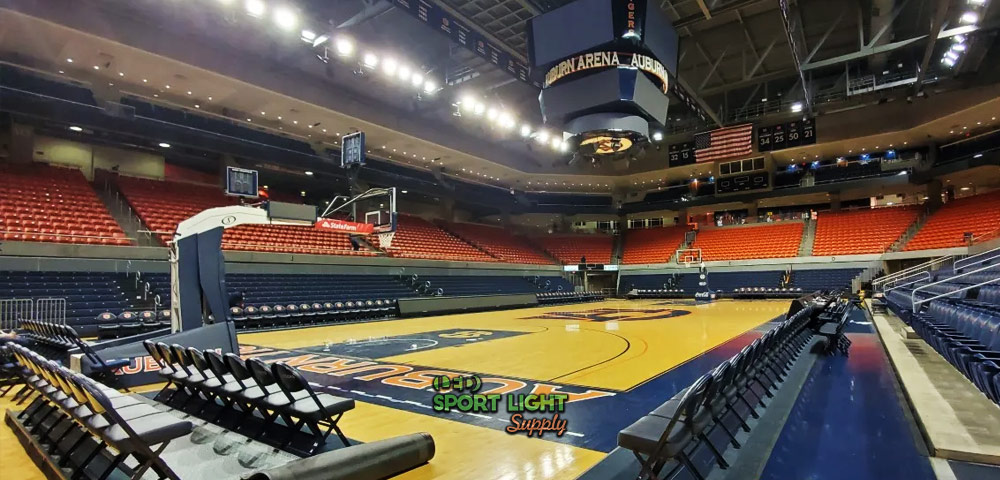
Thanks to its smaller size, the baseball stadium light system cost is lower. Usually, it gets around $3,000 to $25,000. For quality TV broadcasts, NBA and NCAA request minimum footcandle levels. You actually need to go through a checklist. Then, you can apply for an inspection before the championship begins.
The metal halide stadium light quality is extremely expensive. Plus, in the modern basketball court, you only see LED lights to avoid any weight problem. In general, the lighting layout makes use of strategically placed spotlights and floodlights. And since LED lights are more efficient than metal halide lamps, the total number decreases.
For high-school facilities, where the sports apparel is not an outfit, lighting can be minimal. Instead, basketball arenas that host special events must provide enough light to see every backcourt violation. So, you might only have to pay for a high mast fixture to light an outdoor basketball court. Or you might have to spend more on lighting if you own an indoor basketball dome stadium.
6. Tennis stadium light cost
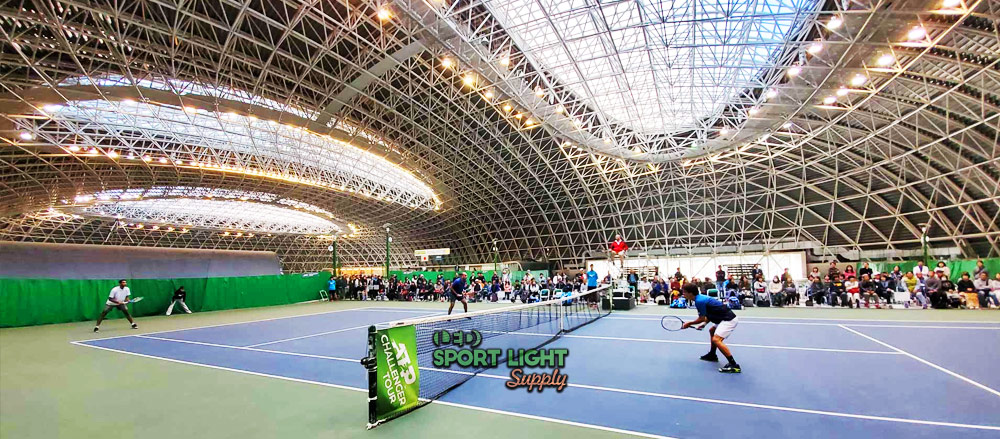
Renovating a tennis stadium light system with LED lights can double your lux level. All in all, the tennis court has a smaller size than other sports fields. So, you can get away with paying only $1,200 to $10,000.
This also applies to new lighting systems for indoor tennis courts with a simple covering. For example, one that consists of a textile membrane fixed on a steel reticular arch structure. Sometimes, tennis stadium owners opt for separate training pitches. But thanks to high-efficiency lights, one or two floodlights on the sidelines are more than enough for training purposes.
Normally, the tennis player dedicates most of his/her training to the specific practice of basic skills. So, cheap lights might be more than enough to provide enough illuminance. Basic skills include the serve, groundstrokes, and the overhead smash. As you can guess, not many factors drive the price of tennis lights. In fact, lights mainly need to provide an adequate light distribution over a small area.
7. Rugby stadium lighting cost
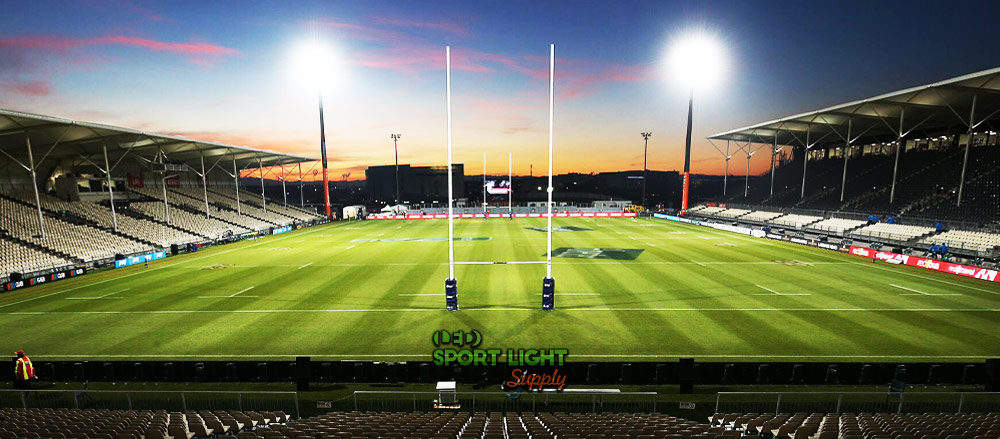
During a rugby match, there is so much going on at the same time. The players shout, the referee yells, and then you see tactics and formations. Thus, the stadium lighting system must provide the right light intensity at every moment.
All in all, the rugby stadium lighting can cost you anywhere from $35,000 to $160,000. The rugby league playing field has a similar size and lux requirement to that of soccer stadiums. Besides, it attracts screaming fans whose presence asks for security lighting.
Spotlights are necessary to highlight markings and goal posts. Then again, you might want extra illuminance on the touch lines. Or enough lighting equipment to ensure optimal broadcasting.
The stadium light price varies in accordance with several factors. For example:
- the kind of game you host (rugby league and rugby union)
- the level of competition
- domestic or international league matches
Part of the lighting system must provide adequate illuminance for the training sessions. In fact, players need to use hit shields, tackle bags, and scrum machines. All these tools require proper lighting to avoid injuries and accidents.
What determines the cost of stadium lights?
1. Size of the stadium sports field
Under the same lux requirement, stadium light costs will be higher for a football field and lower for a tennis court. This is because you need more lights to light up a larger area.
By the same token, an oval cricket field requires a specific layout. And so does the baseball diamond. In these sports, you cannot install a high mast right in the center of the field. Mainly for safety reasons.
Whenever the size and shape of the pitch impose a considerable distance, you must install high-power lights. Of course, the greater the distance, the more powerful the lights. In reality, here, the word power refers more to the lamp’s lumen output than its wattage.
Brighter fixtures always cost more money than standard ones. But in this case, using metal halide spotlights could lead to using even more fittings than necessary. In fact, different products have varying efficiency levels. So, we could also say that the pitch size forces you to consider the available light installation points.
2. Level of competition
For most sports, we can divide the various lighting requirement settings into three classes. That is, classes I, II, and III. Think of them as:
- Class I for international, top level competitions
- Class II for professional domestic and/or regional leagues and tournaments
- Class III for high school sports events and recreational and training use
In essence, each class has a different lux requirement. More importantly, the goal changes as the lighting system must suit the arena. Since top level competitions are bound to be televised, you need the most reliable and flicker-free lights. Instead, a few cheap lights are more than enough for recreational use.
High-level athletes mean high execution speed. So, umpires need better lights to spot any illegal contact. At the same time, TV broadcasters use high-end video cameras and require professional sports lights with high CRI or TLCI ratings.
The stadium light price reflects the technical features of each light. Usually, flicker-free and remote-controlled light systems end up being more expensive than cheap fixtures. However, this does not imply that they can increase your operational expenses as well. In fact, they may have a higher price point, but they could let you save more in the long run.
3. Light pole and stadium roof height
Sports stadiums might host concerts or social events. Plus, high-capacity stadiums must provide adequate lighting for all fans in the stands. So, stadium owners usually install tall light poles or mount the lights on the ceiling.
The taller the high mast poles, the greater the light loss. Same for the installation height on domed stadium ceilings. So, installing more lights become necessary to compensate for the light loss.
Every stadium light fixture comes with a recommended installation height. In this way, you can approximately calculate the lux level at ground level before you buy them. Generally, one needs 3 to 5% more lumen output every 10 meters of additional installation height. But this varies according to beam angle and the position of a light pole. So, it is better to consult a lighting designer for a professional stadium lighting project.
If the light poles are too low, you might have a similar problem. In that case, you would either have to install new high masts or use portable LED lighting solutions. But in the end, you will spend more money than necessary.
4. Lighting uniformity requirement
Uneven light distribution causes the human eyes to squint. Plus, it distracts attention from the surrounding activities. In other words, it can set the stage for dangerous accidents. Especially in full-contact sports like rugby, soccer, and football. This is why lighting standards insist on optimal lighting uniformity.
Lighting uniformity refers to evenly distributed illuminance. Simply put, the way artificial lighting covers the whole playing area. Of course, some areas could receive more lights than others. But stadium owners must ensure that the light intensity does not change dramatically from one spot to the next.
A satisfying lighting uniformity means better visibility for athletes, spectators, and umpires. For example, players can detect smaller details and avoid holes in the ground. Cricket umpires can focus for more hours without getting tired. And so on.
In price terms, you may need more lights to eliminate the shady region of the stadium. So the lighting cost is higher if we need lighting uniformity >0.8. That figure refers to the division of the minimum (or mean, according to the standard) lux level value by the maximum value reading on the pitch.
5. Lamp origin
Most stadium lights will be more expensive if made in the USA, UK, Germany, or other western countries. Instead, you can buy cheap stadium lights made in China, India, or Vietnam.
The place of production matters because of cheaper labor costs and factory rent. Also, these manufacturers pay a lower commodity price. Besides, the raw materials of stadium lights such as aluminum, LED chip, and wires are also available in Asian countries at competitive prices.
The lamp cost discrepancy can be up to 2 or 3 times higher if you buy the same wattage light in China and the US, respectively. For instance, if the price of a 1,500W stadium light is $1,200 in Asian countries, the same light can cost you up to $2,500 in the USA.
Sometimes, you can save more by buying in bulk. But in that case, you need to take into account the shipping fee and the seller’s reputation. In fact, extremely cheap offers could be a scam. This is why it is good to get a little bit of consulting expertise from professionals like us.
6. Lighting control system
Often, sports events go hand in hand with marching bands or other entertaining activities. Just think of the halftime show during the NFL Super Bowl. Of course, you need a specific lighting control system to set all the necessary light effects.
DMX and DALI are the most common lighting control systems for stadium lights. If one needs more advanced lighting control, additional devices come into play. This includes grouping and addressing lights or dimmers. Most likely, you will need a professional lighting controller and a module on the stadium lights. Naturally, the light cost increases as the lighting apparatus rises in complexity.
The Digital MultipleX (DMX) protocol is also known as DMX512. In fact, this system lets you control up to 512 channels. It is perfect if you need to manage smart LED stadium lights, strobe lights, lighting scenarios, smoke machines, and lasers at the same time.
If you still use metal halide lamps, you might need to install a DALI compatible electronic safety converter for other fixtures. For example, to connect low-voltage 12V halogen bulbs to the control system.
7. Light source
MH and mercury vapor stadium lights are cheaper than LED. That is, if you look at the price per watt ratio. But MH and mercury vapor lamps are more fragile and have a shorter life span.
LED is a more energy-saving and long-lasting tech (up to 150,000 hours). In brief, you can save any maintenance cost just by using LED. Of course, cleaning the optics from time to time still remains to be done. But, you will not have to worry about a metal halide exploding because the cleaner did not polish the glass well enough.
In the long run, the stadium lighting system will require updates. Especially to comply with the ever-changing lighting standards. Thanks to smart remote control applications, you can set up different lighting profiles from your smartphone. So, you will also save time.
Mercury vapor lamps are dangerous due to their content. Plus, they emit UV radiation. As you cannot buy mercury vapor lamp ballasts anymore, replacing any HID bulb with LED lights is the best option. Sure, the initial cost will impact your overall expenses. But after you look at how much money you waste on HID bulbs, a system replacement becomes badly needed.
8. Special components
Barn doors and anti-glare lenses help reduce light spill and light pollution. Besides, they give a more welcoming look to the stadium gates and stands.
These components may cost extra. Usually, the stadium light price includes a standard setup for each fixture. So, you need to make sure that the model you are looking at comes with the desired components.
Whenever you buy lighting accessories for your luminaries, expect to pay more for every single piece. And if you find out you need a wall washer attachment too late, you might have to spend even more money. Mainly because of compatibility issues. In fact, buy a new fitting can be less expensive from time to time.
Soccer stadium regulations always require the owner to install lightning rods. Then again, depending on your light sources, you might need to install more heat sinks for thermal management. Besides, the heat may attract pigeons and other birds that may spoil the luminaries. So, you might have to consider the purchase of anti-roosting spikes.
How to save on stadium light cost?
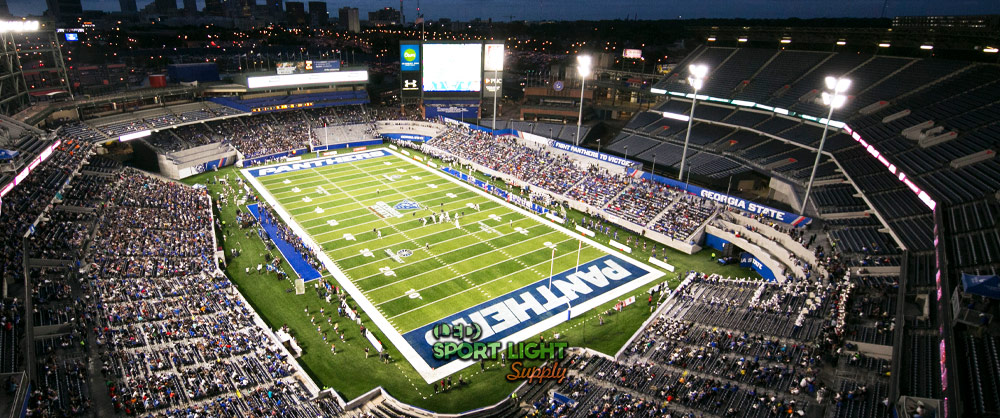
1. Use LED stadium lights
Aside from the lamp price, one also needs to consider the running and maintenance costs. So, choosing the right light source is essential. LED lights quickly became the best and most affordable lighting solution.
For one thing, the light-emitting diode tech consumes way less power than any other light source. The high LED energy efficiency lets you replace any metal halide or halogen light confidently. In fact, you can choose from a vast range of products. Plus, LED lights can let you control the color temperature, so one product reproduces more than one light source.
The color temperature is the light hue. Usually, metal halide lamps have bluish shades, just as mercury vapor lights. Instead, HPS and halogen bulbs emit a more yellowish tone. Most LED lights can change their temperature color remotely. So, you will not have this problem anymore.
Finally, LED lights last longer, up to ten times more than MH or any HID lamps. So, by installing LED products, you save on many aspects at the same time.
2. Buy the stadium lights directly from the manufacturer instead of a distributor
Not everybody likes to take this route. But you can actually avoid unnecessary fees. The average distributor marks up the price of stadium lights by 15% to 40%. Then again, they might sell you lamps that have been stocked for months or years.
Most manufacturers will only sell in bulk. Nonetheless, you can save on the stadium light cost by requesting a professional lighting report first. Then, you only need to place a custom order. If you need more lights, the manufacturer will probably offer you a good deal.
For the best savings, order dimmers. If the fixtures are compatible with timers and photocells, that is even better. Usually, distributors sell expensive LED dimmers only. Mostly because the demand is limited to private citizens.
What you need to watch out for are the shipping fees. Plus, make sure you take every precaution before spending your money on any shady deal.
3. Ask for a discount
Most stadium lighting manufacturers are willing to provide you with a generous discount. That is, if you buy more products at once. For example, if you order more than 40 pcs, you can expect to pay way less for each light. Especially if you want to install LED floodlights.
Sometimes, you can strike a deal before the manufacturer creates a whole lot. You can either set up an online group buy for bigger discounts. In this case, contact the manufacturer and request the minimum quota for your desired price point.
Of course, you might end up negotiating. But manufacturers and some wholesalers need liquidity to adapt until the coronavirus crisis is past. So, asking for a discount will prove to be the quickest and most effective way.
4. Get a stadium lighting design
The best lighting design will yield optimal light distribution and lux levels on the pitch. Besides, the expert can suggest which lights you need to buy.
A qualified lighting designer should have an R&D department to provide the best lighting solutions. Either by offering customized plans or by testing new products regularly.
A good lighting plan optimizes the lighting arrangement for each specific sport. Plus, it prevents you from buying unnecessary lights. After all, the designer includes the most cost-efficient light source in the layout. Basically, requesting a professional lighting design is a long-term investment.
Sure enough, it is the only guaranteed method to get the perfect light on every part of your stadium. It will also save time and money because you will not have to fix anything. Once you selected your budget, you will receive a functional project to get the best from every cent.
5. Used stadium lights
Contrary to popular belief, second-hand LED lights are quite handy. Technically speaking, LED lights’ intensity decreases over time. Yet, most sports stadium light products have impressive survival factors. In other words, they are long-lasting and reliable light sources.
Without a doubt, they are almost instantly available from a market perspective. You do not need to wait for the production. But, you cannot customize the beam angle and lumen output of the lights. So, think of a used stadium light as an option for a cheap replacement.
As we saw, different stadiums have varying pole heights, pole amount, and field size. Usually, it is quite difficult to reuse the lights. Unless the new stadium has the same configuration as the old one, you might get a different result.
Do not bother buying used metal halide or HID lamps, though. To explain, the light maintenance of these light sources is terrible. It is so bad that they lose half of their initial lumen output after the first 50,000 hours.
6. Shorter light poles
Here is an ingenious solution that may solve your problems. But it suits little stadiums more than bigger ones. By shortening the light pole height, you reduce light loss. In other words, you can reduce stadium light cost by using cheaper stadium lights which consume fewer watts.
If you plan to shorten the light poles in a big stadium, you will need to install new poles. Plus, installing LED lights is a given. Mostly because LEDs are the only light source that does not burn as bad as HID or MH lights. Then again, LED lights are safer under many circumstances and other factors such as weight and zero emissions of dangerous radiations.
Conclusion
The tips about saving the stadium light cost focused on your decision making. In fact, you can save big on the electricity bill by choosing to install LED lights. But at the same time, you need to carefully plan the lighting layout.
Given that you can spend more than $200,000 on an expensive lighting system, your choices matter. Thanks to LED equivalent lights, you can cut your expenses. And sometimes, you can devise a better lighting design to use cheap LED lights and save even more.
The low metal halide price tag is not worth the effort anymore. Their time is past, and new options offer excellent value for money. But you still represent the center of the whole thing, as your foresight will determine how much you can save. Whether it is to make your own replacements or to contact qualified experts in the field.

